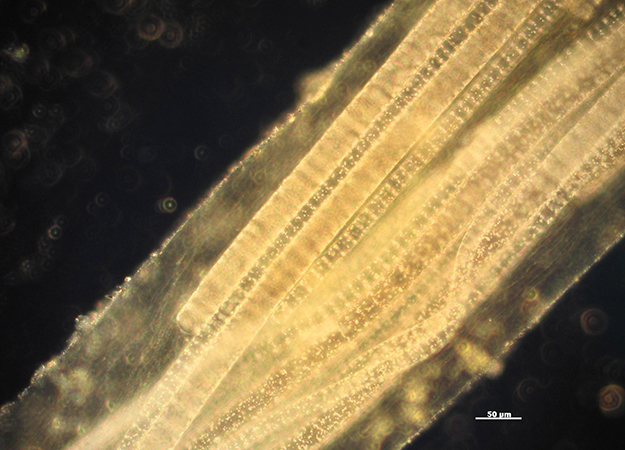Mac researchers discover new microbe near Chilean coastal fault line

Small but mighty. While working in South America, a team of University researchers led by Nathan Magarvey uncovered a new molecule with powerful natural properties, 'macplocimine A.'
A team of researchers from McMaster and the University of Concepción are shining a light on rare sulfur-loving microbes off the coast of Chile.
The group’s work near coastal fault lines has identified a previously unknown type of molecule, macplocimine A, which produces valuable natural chemicals that are known to function as effective cancer therapies and antibiotics.
“The search for new drugs takes many forms and routes, but one that often has success is the search for microbes,” said Nathan Magarvey, a researcher with the Michael G. DeGroote Institute for Infectious Disease Research, and project leader in Chile. “The fascination of finding drugs from natural sources has long been guided by serendipity alone, but now researchers are defining genomic and metabolomic patterns that illustrate where new drugs may be found and how these drugs are made and change.”
Magarvey led the study with McMaster research associates Xiang Li and Wenliang Wang from the Department of Biochemistry and Biomedical Sciences, and Rostyslav Zvanych, Stephanie Vanner and Morgan Wyatt from the Department of Chemistry and Chemical Biology.
With further digging on land, Magarvey’s team studied other microbes that have developed the ability to attack pathogens and kill drug-resistant bacteria. Further to this research, Magarvey and his team have unveiled principles of how microbes are generating natural bioactive small molecules and creating new ones.
Using a combination of genetic and chemical approaches, the new findings ultimately lead to a better appreciation of how good nature is at making diverse drugs.
“In other words,” said Magarvey, “we captured and honed-in on some previously unexplored terrestrial and marine bugs and uncloaked the process by which they make drugs scaffolds. This is another example of the power of the microbe to create fascinating chemicals that we can exploit to treat human disease.”
Using McMaster’s Centre for Microbial Chemical Biology for further research, Magarvey is demonstrating that nature’s weaponry can be harnessed to treat a spectrum of diseases. He feels this work will ultimately further drug design efforts that are powered and inspired by nature.
The research was published in a series of journals, including: The Journal of Antibiotics, Bioorganic and Medicinal Chemistry Letters, Canadian Journal of Microbiology, Biochemistry and Cell Biology and Molecular Biosystems, and received funding from the Natural Sciences and Engineering Research Council of Canada.

